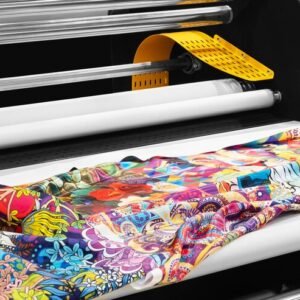Digital Prints
Fabric Type :Digital prints can be applied to various fabric types, including cotton, polyester, silk, rayon, or blends. The choice of fabric impacts the final appearance, feel, and drape of the printed design.
Printing Technique: Specify that the digital printing technique is used. Unlike traditional methods, digital printing allows for high-resolution images and complex designs to be directly printed onto the fabric using specialized printers.
Color Reproduction: Digital printing enables accurate color reproduction, providing a wide spectrum of colors and intricate details. Specify the color space used, such as CMYK or RGB, to ensure consistent results.
Resolution: Digital prints are characterized by their high resolution. The resolution is measured in dots per inch (DPI) or pixels per inch (PPI), indicating the level of detail in the printed design.
Print Size: Specify the maximum print size that the digital printing equipment can accommodate. This information is essential for understanding design limitations and planning for specific projects.
Base Color of Fabric: Consider the base color of the fabric on which the digital print is applied. The choice of the base color can affect the overall appearance of the printed design.
Fabric Width: Specify the width of the fabric rolls available for digital printing. Common fabric widths include 44/45 inches or 58/60 inches. The width is crucial for estimating fabric yardage and planning for pattern layout.
Printable Area: Identify the maximum printable area on the fabric. This information is essential for designers and manufacturers to understand the usable space for creating patterns.
Fabric Weight: Specify the weight of the fabric, which is often measured in grams per square meter (gsm) or ounces per square yard. The fabric weight can influence its suitability for different applications.
Durability: Consider the durability of the digital print. The ink used in digital printing should be colorfast, ensuring that the design remains vibrant after washing and exposure to sunlight.
Finish: Specify any finishing treatments applied to the fabric after the digital printing process. This could include softening treatments, water repellency, or other enhancements.
Care Instructions: Provide recommended care instructions for the fabric to maintain the integrity of the digital print. This may include washing, drying, and ironing recommendations.
Read more
Add to Compare
Dull Satin Polyester
Material Composition: Typically made from cotton, although blends with other fibers like polyester or rayon may also be used.
Weave: Sateen weave, featuring a four-over-one-under pattern that creates a smooth surface and a matte finish.
Weight: Medium to heavyweight, providing substance and durability.
Color: Available in various colors, including both muted and vibrant tones.
Care Instructions: Dull sateen fabric is often machine washable.
Read more
Add to Compare
Hand blocks Prints
Fabric Type: Handblock prints can be applied to various fabrics, including cotton, silk, linen, and blends. The choice of fabric can affect the overall feel and appearance of the print.
Design and Patterns: Handblock prints feature a wide range of designs and patterns. These can include floral motifs, geometric shapes, traditional Indian motifs, or contemporary designs. The complexity of the design often depends on the skill of the artisan.
Color Palette: Handblock prints can be found in a diverse array of colors. Traditional prints may use natural dyes, while modern versions may incorporate a broader spectrum of synthetic colors.
Block Carving Technique: The quality of handblock prints depends on the craftsmanship of block carving. Skilled artisans carve intricate patterns into wooden blocks, ensuring precision and clarity in the final print.
Block Printing Process: The fabric is typically stretched out on a flat surface, and each color in the design is applied separately using a different carved wooden block. The process is repeated until the entire pattern is completed.
Print Consistency: Handblock printing may have slight variations in color and alignment, which add to its unique and handmade charm.
Read more
Add to Compare
Jacquard Fabric
Material : Commonly made from a variety of fibers, including cotton, silk, wool, polyester, or blends of these materials.
Weave :Jacquard weave, a complex weaving technique that allows for intricate patterns and designs to be woven into the fabric.
Weight : Weight can vary depending on the material
Width : Standard width typically ranges from 54 to 60 inches (137 to 152 cm), though variations exist based on the manufacturer.
Finish : Can have various finishes, including matte or shiny, depending on the desired aesthetic.
Color option : Available in a wide array of colors.
Care Instructions: Care requirements depend on the specific fibers used
Read more
Add to Compare
Knitted Prints
Material Composition : Knitted prints can be made from a variety of fibers, including cotton, polyester, rayon, spandex, or blends of these materials. The choice of fiber influences properties such as stretch, softness, and breathability.
Weight: Knitted fabrics come in various weights, ranging from lightweight for T-shirts and undergarments to heavyweight for sweaters and outerwear.
Print Type: Knitted fabrics can be printed using various techniques, including screen printing, digital printing, or heat transfer printing.
Colorfastness: Ensuring that the printed designs on knitted fabrics are colorfast is crucial. This property ensures that the colors do not fade or bleed easily, especially during washing or exposure to sunlight.
Width: Knitted fabrics are typically available in rolls with varying widths, such as 60 inches or 72 inches. The width can impact pattern layout and garment construction.
Care Instructions: Recommended care instructions for washing, drying, and ironing the fabric to maintain its appearance and stretch properties.
Read more
Add to Compare
Lining Jacquard
Material Composition: Jacquard lining fabric can be made from various materials, with common choices including silk, polyester, acetate, or a blend of these fibers.
Weave: Jacquard fabrics are characterized by a complex weaving process that allows for the creation of intricate patterns.
Pattern/Design: The defining feature of Jacquard lining fabric is its elaborate patterns and designs. These can range from simple geometric shapes to intricate floral motifs, paisley patterns, or even textured effects.
Color: Jacquard lining fabrics come in a wide range of colors.
Weight: The weight of Jacquard lining fabric can vary based on the chosen material and the complexity of the weave
Width: The width of Jacquard lining fabric is typically similar to other lining materials, ranging from 44 to 60 inches (112 to 152 cm).
Care Instructions: Care instructions for Jacquard lining fabric will depend on the specific fibers used.
Read more
Add to Compare
Lining Poly Satin
Material Composition: Poly sateen lining is made from polyester fibers. Polyester is a synthetic material known for its durability, wrinkle resistance, and affordability.
Weave: Sateen weave is characterized by a four-over-one-under pattern, which results in a smooth and lustrous surface. This weave gives poly sateen lining its distinctive sheen.
Finish: Poly sateen lining may undergo finishing processes to enhance its characteristics.
Weight: Poly sateen lining is generally lightweight, ensuring that it adds minimal bulk to garments.
Color: Poly sateen lining is available in a variety of colors.
Width: The width of poly sateen lining fabric typically ranges from 44 to 60 inches (112 to 152 cm).
Care Instructions: Care instructions for poly sateen lining are typically straightforward. It is often machine washable and may require ironing at a low temperature.
Read more
Add to Compare
Lining Poplin
Material Composition:Lining poplin is typically made from cotton or a blend of cotton with other fibers like polyester or nylon.
Weight: Lining poplin is lightweight, with a weight typically ranging from 2 to 4 ounces per square yard (oz/yd²) or 68 to 135 grams per square meter (gsm). The lightweight nature of the fabric ensures that it adds minimal bulk to the garment.
Weave: Poplin is characterized by its plain weave, featuring a simple over-one, under-one pattern.
Color: Lining poplin is often available in a wide range of colors to match or complement the outer fabric of the garment.
Finish: Lining poplin may have various finishes to enhance its properties. Common finishes include a softening treatment for a smooth feel and anti-static finishes to reduce static electricity.
Width: The width of lining poplin fabric typically ranges from 44 to 58 inches (110 to 145cm).
Care Instructions: Lining poplin is often machine washable and easy to care for. However, specific care instructions may vary based on the composition of the fabric
Read more
Add to Compare
Lining Taffeta
Material Composition: Taffeta lining is commonly made from synthetic fibers, such as polyester or nylon. The choice of material can affect characteristics such as durability, sheen, and cost.
Weave: Taffeta lining is woven using a plain weave, creating a fine and tight pattern.
Finish: Taffeta lining often undergoes finishing processes to enhance its characteristics. Common finishes include treatments for increased sheen, crispness, and smoothness, providing a luxurious feel.
Weight: Taffeta lining is lightweight.
Color: Taffeta lining is available in a wide array of colors.
Width: The width of taffeta lining fabric typically ranges from 44 to 60 inches (112 to 152 cm).
Care Instructions: Care instructions for taffeta lining will depend on the specific fibers used.
Read more
Add to Compare
Product categories
- Cotton Fabric (11)
- 60 cambric (1)
- Cambric (1)
- chambray (1)
- Cotton Fleece (1)
- Denim (1)
- Jacquard (1)
- Poplin (1)
- Printed Denim Fabric (1)
- Satin (1)
- Velvet (1)
- Voile (1)
- Cotton Linen (1)
- Digital Print (1)
- Fabric Trends (0)
- knits fabric (5)
- Cotton (1)
- Poly knitted (1)
- Poly Lycra (1)
- Rise design (1)
- viscose (1)
- Linen fabric (7)
- Lining Fabric (5)
- Lining Jacquard (1)
- Lining Poly Satin (1)
- Lining Poplin (1)
- Lining Taffeta (1)
- Lining Taffeta twill (1)
- Plain Woolen (1)
- Polyester Fabric (11)
- American Crepe (1)
- Blackout (1)
- Dull Satin (1)
- Micro Polyester (1)
- Moss (1)
- Poly Satin (1)
- Poly Satin lycra (1)
- Polyester Net (1)
- Russian Georgette (1)
- Taffeta lining (1)
- Weightless Georgette (1)
- Print (8)
- Chanderi (1)
- Cotton Prints (1)
- Hand Blocks (1)
- Knitted Prints (1)
- Poly Prints (1)
- Prints Linen (1)
- Silk Prints (1)
- Traditional Ethnics (1)
- Uncategorized (0)
Deprecated: ceil(): Passing null to parameter #1 ($num) of type int|float is deprecated in /home/u543852720/domains/thtextiles.in/public_html/wp-content/plugins/et-core-plugin/app/models/widgets/price-filter.php on line 123










